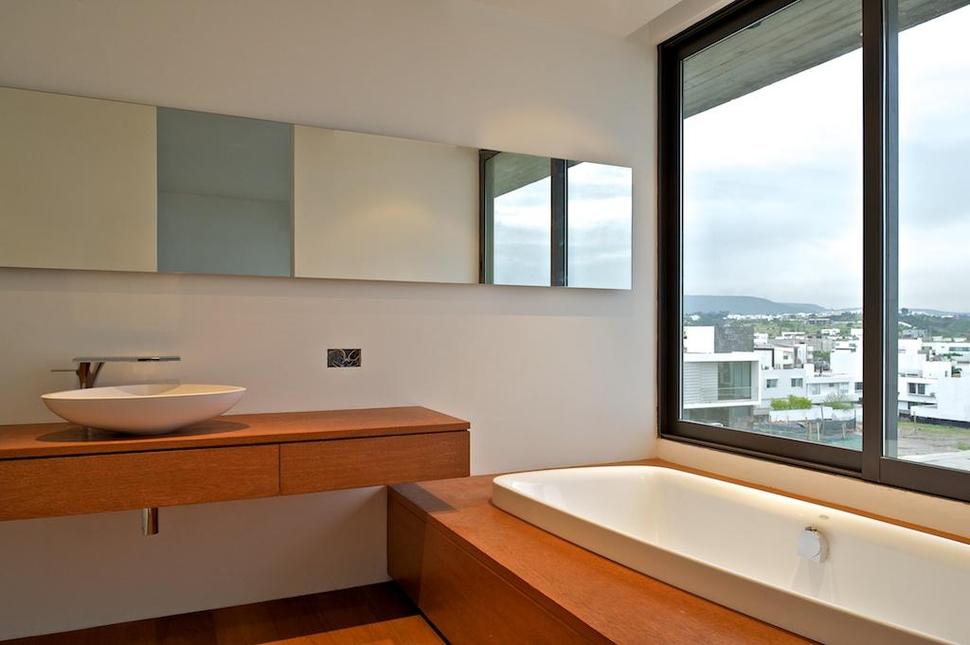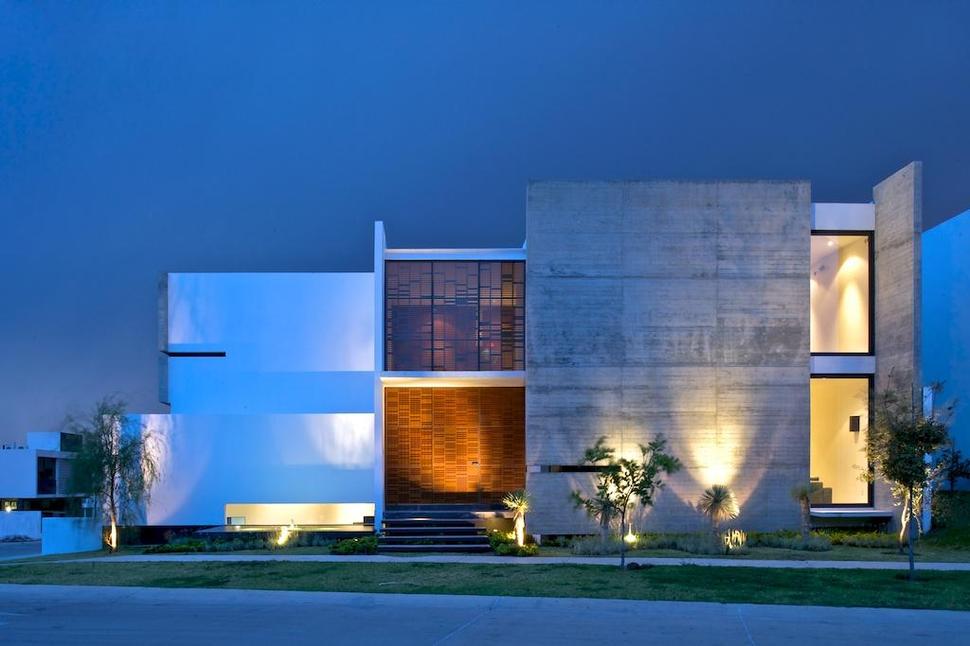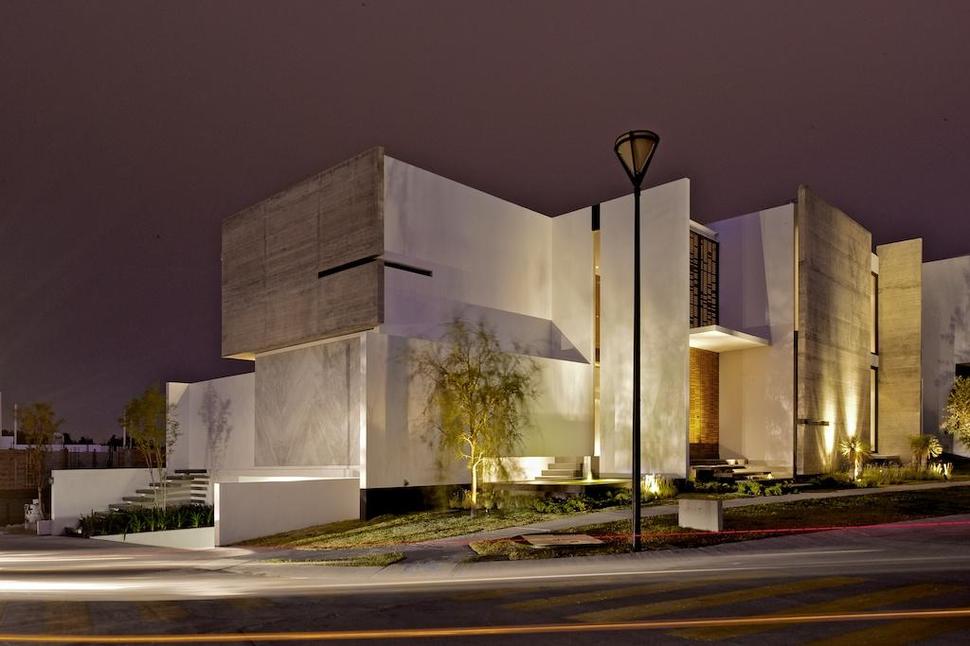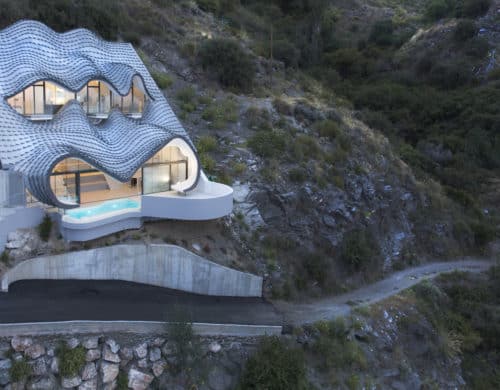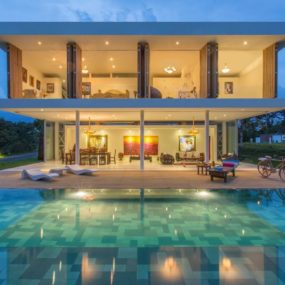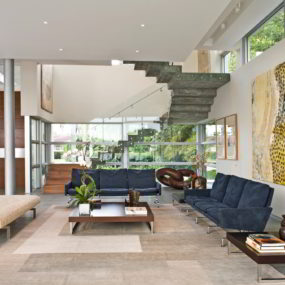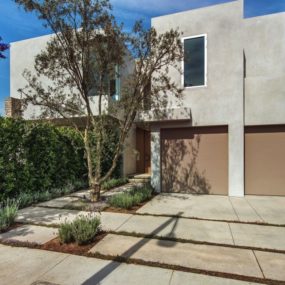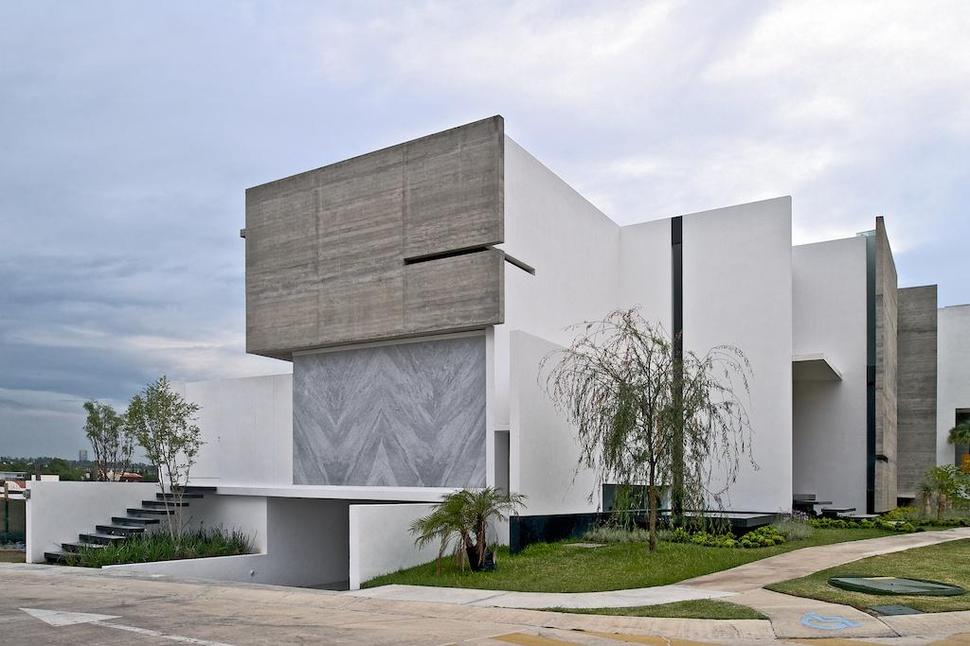
This contemporary project carried out by Agraz Arquitectos is very representative of the practice’s architectural style. Their signature is mainly the sophisticated approach they have in terms of facades. Straight vertical and horizontal lines intersect creating overhangs and protrusions that emphasize the openings for doors and windows. Although it is a multi-storey house, it has a feeling of the 50’s pavilions to it. The materials are simple, but the mix is sophisticated. Raw concrete goes side by side with noble marble, on a background of immaculate white. Narrow cut-outs create niches that bring in punctual natural light, while preserving the privacy of the house on the sides facing the street. The corner plot on which the house was built is adjacent to another plot with a project from the same architects. They took thus the opportunity to create a dialog between the existing project and the new one by implementing a similar program. The house has three floors, an excavated one for garages and service rooms and two floors above the ground, dedicated to the living space.
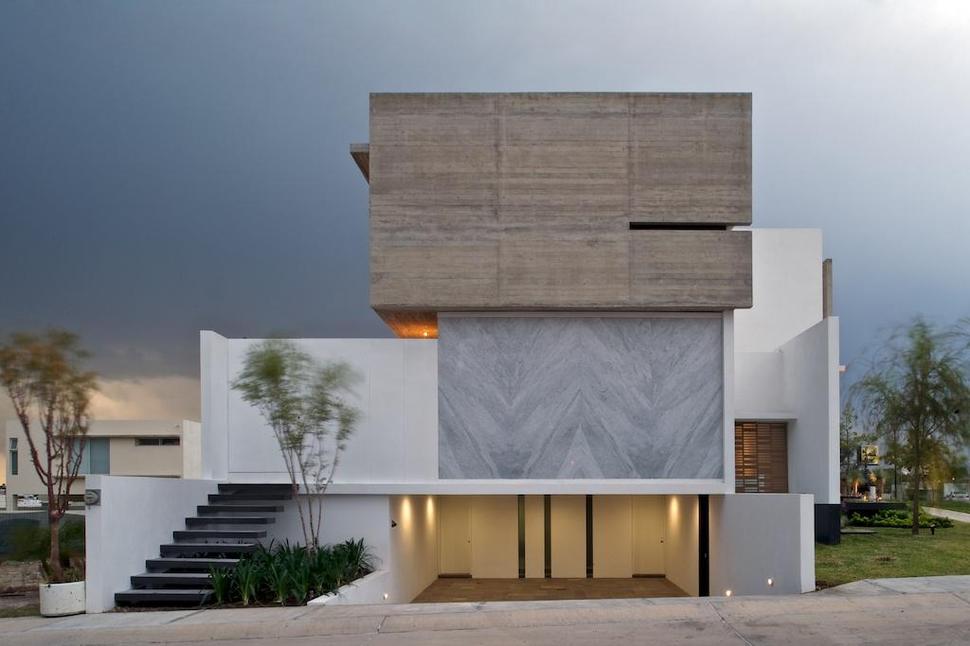
On one side of the corner plot there is the garage entrance, while the main entrance from the street is on the other side.
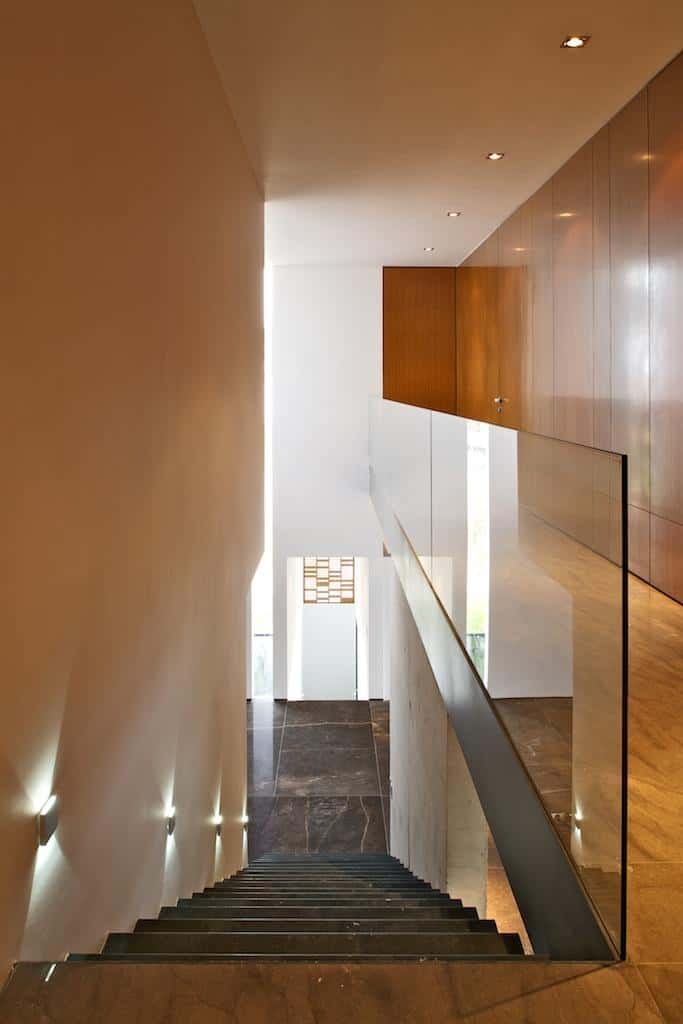
The vertical circulation in the house is defined by a sculptural staircase in bent metal sheet. The stairs seem suspended between one floor and the other, as they do not touch the lateral walls.
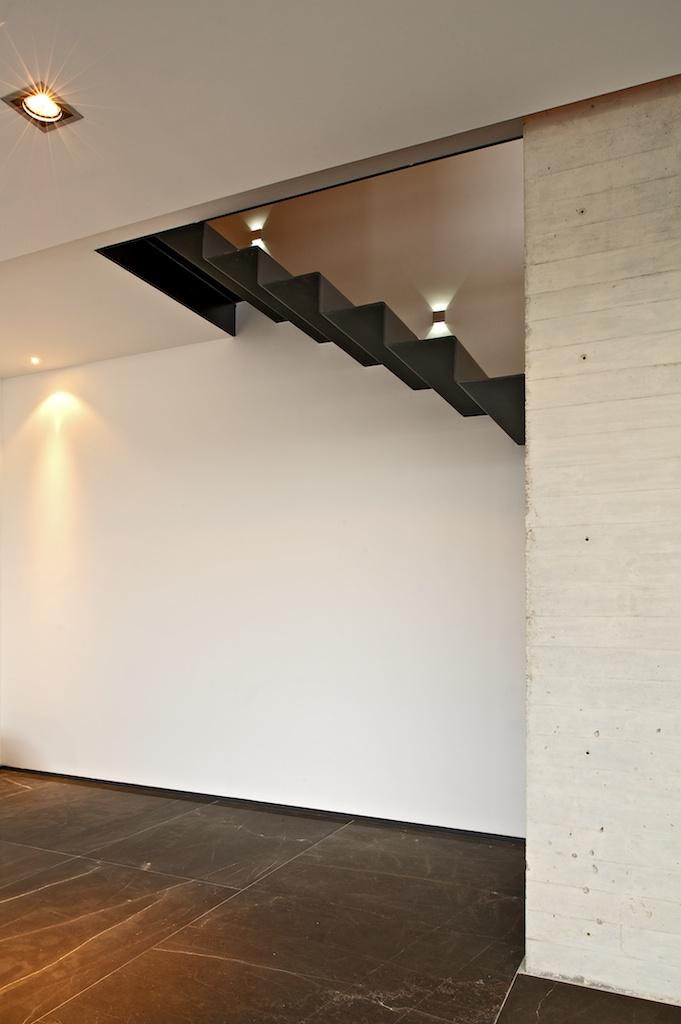
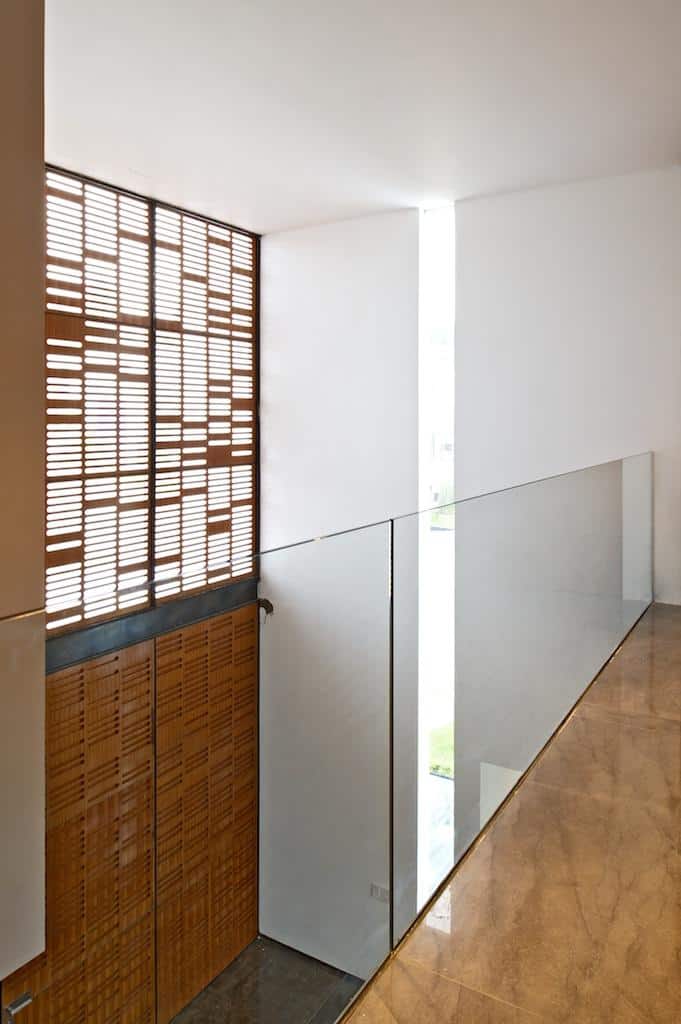
The main entrance is met by the arrival of the flight of stairs coming from the garage. There is a double height void in this point, creating an open and luminous space. The light is filtered by a wooden screen which also serves to protect the privacy of the house from on the street side.
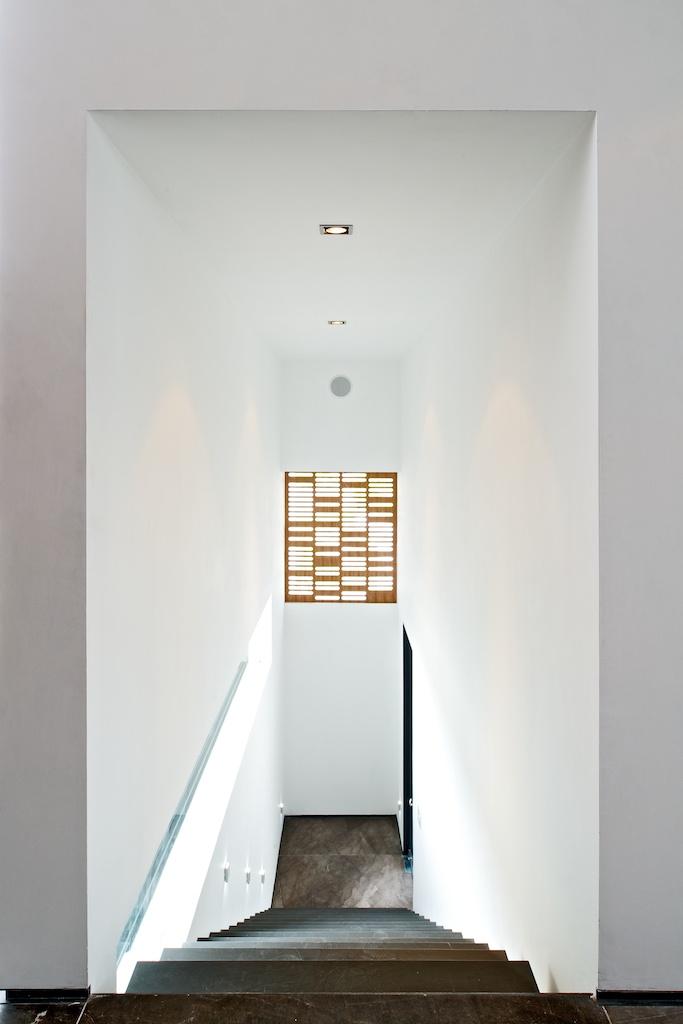
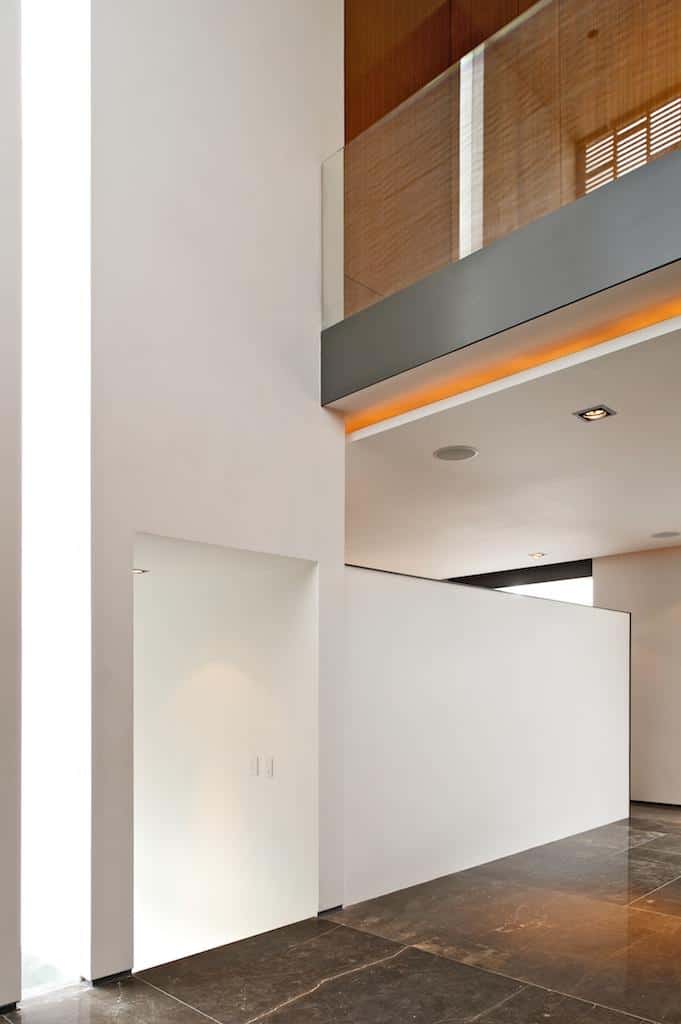
The second floor glazed gallery overlooks the double-height void of the entrance.
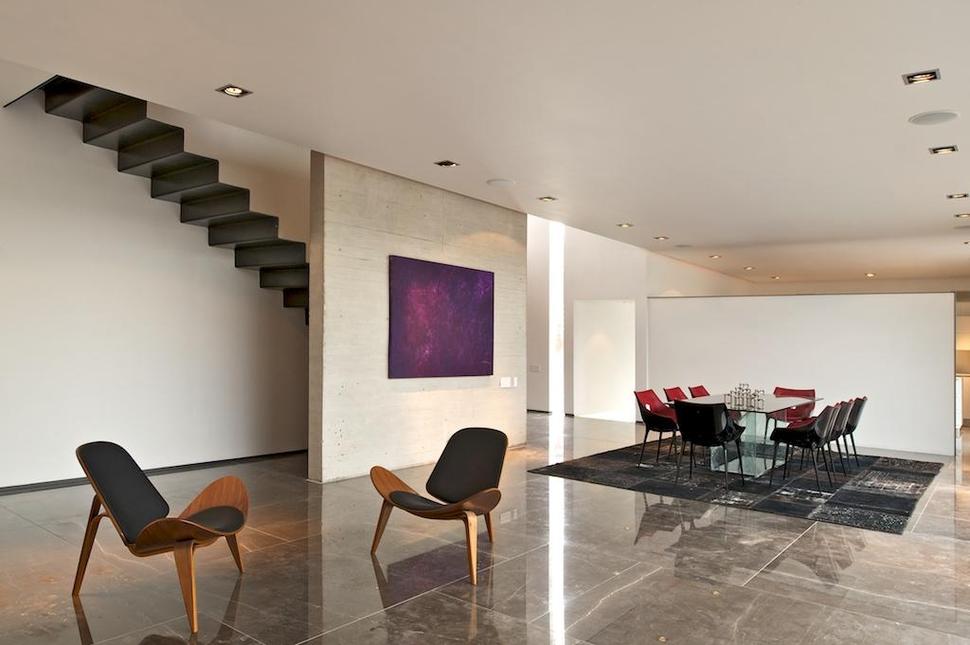
On the ground floor, the living and dining space is separated from the kitchen by a half-height partition wall. The floor is covered by large-sized marble slabs both inside and outside, on the terrace. When the glazed sliding doors are open, the terrace and the inside living space become one.

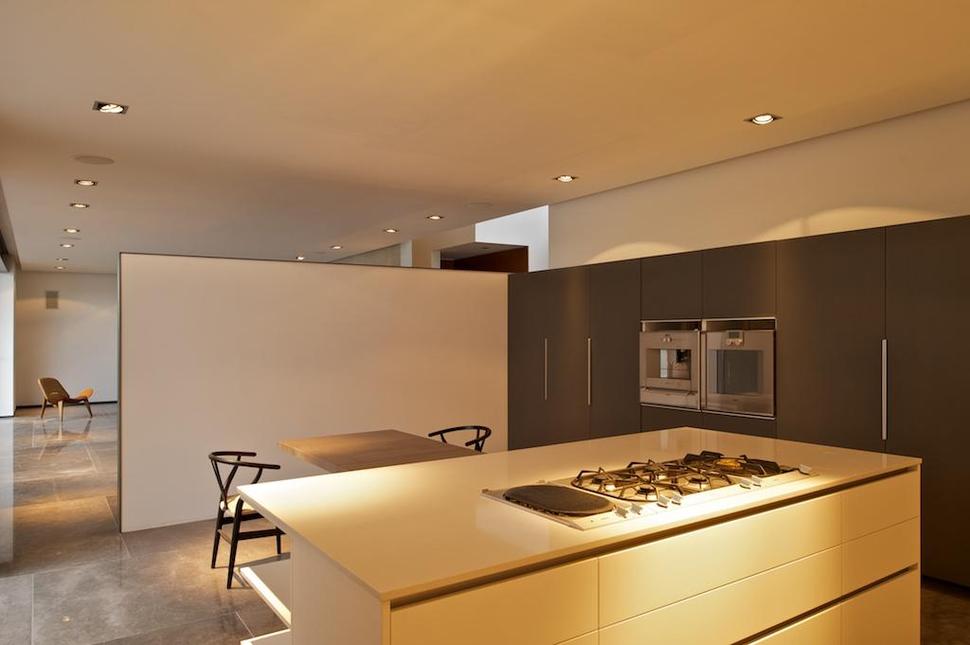
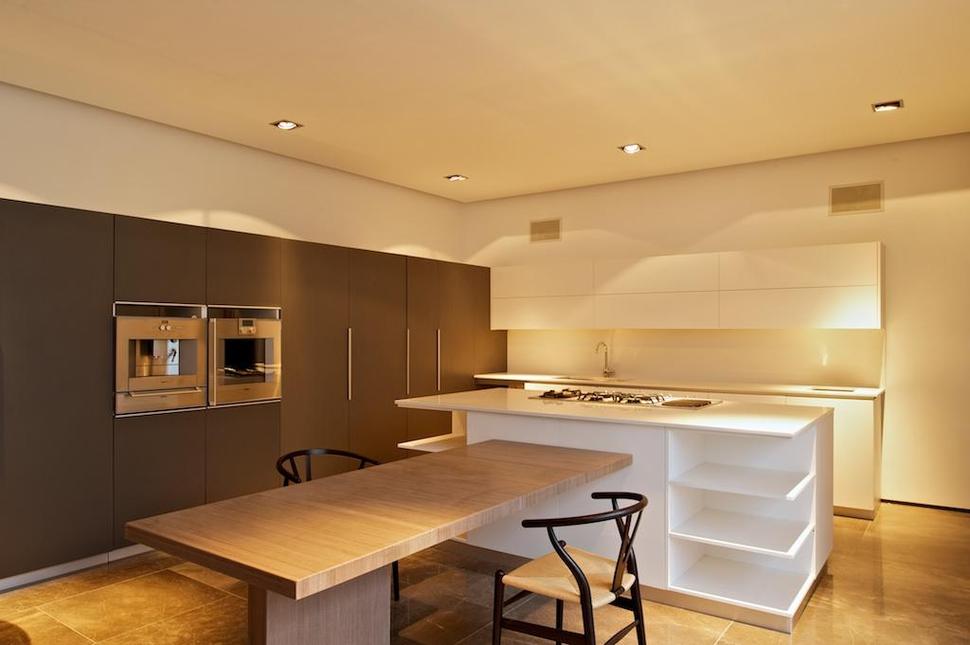
The kitchen is a live-in place, half separated from the living and dining room. The family can reunite around the kitchen table for breakfast or informal meals.
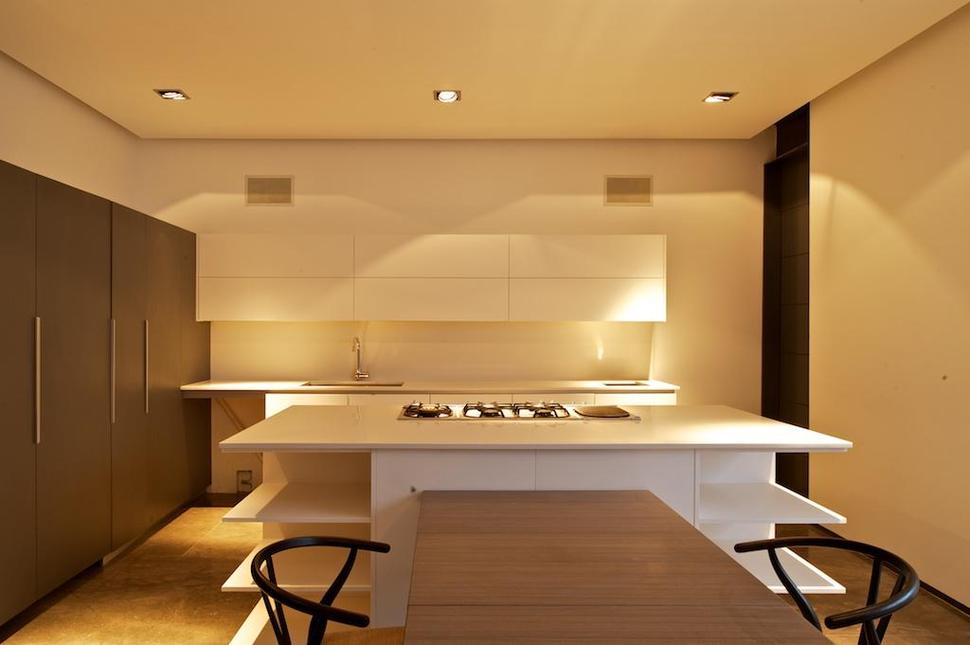

The bathrooms ally the same materials we find throughout the house. The visitors’ toilet is a mix of marble, sheet metal and concrete.
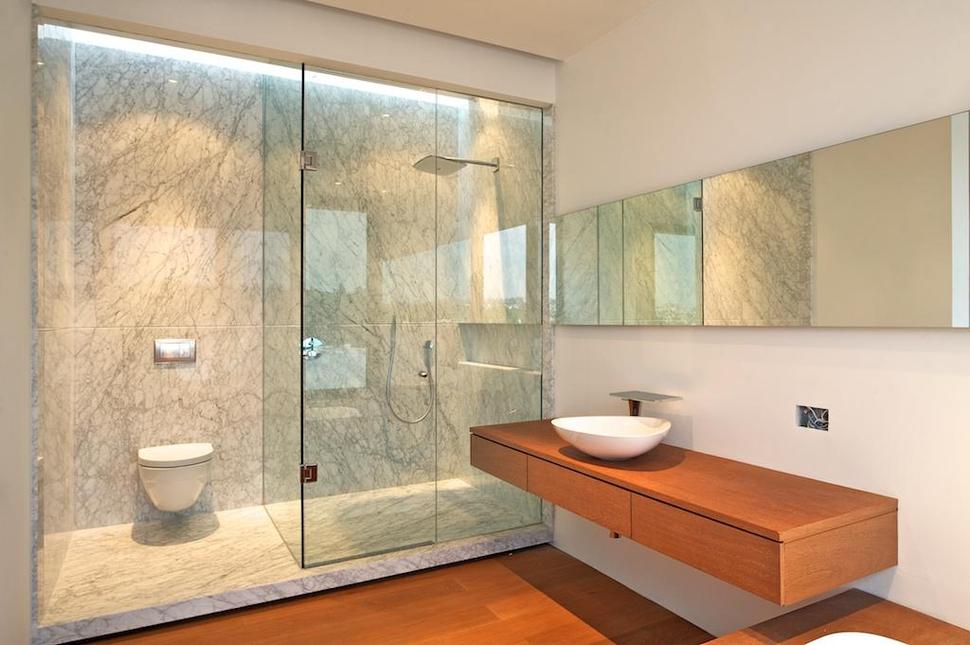
In the master bathroom, the cold marble of the shower is warmed up by the wood of the washbasin furniture and the cover of the bathtub.
